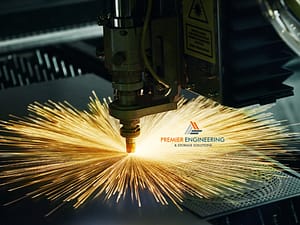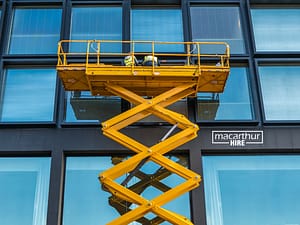Laminated boards are made by gluing together layers of wood veneers or wood particles. These boards are strong, stable, and versatile, which makes them great for furniture, flooring, and interior design. The top layer is often a high-quality veneer that gives it a nice, durable finish. This is why laminated boards are popular for both homes and businesses.
Why Wood Veneers Matter in Laminated Boards
Wood veneers are a key part of laminated boards. They give the look and feel of solid wood but are much more affordable. Veneer suppliers offer many types and finishes, so manufacturers can create products that suit different styles and needs. Using veneers makes laminated boards beautiful while also being durable and stable, perfect for many uses.
Types of Wood Veneers in Laminated Boards
Popular Wood Species for Veneers
Wood veneer suppliers offer different wood species, each with its own look and feel. Here are some popular ones:
- Oak: Known for its strength and bold grain, often used in furniture and cabinets.
- Maple: Smooth and light-coloured, perfect for modern, simple designs.
- Walnut: Dark and luxurious with intricate grains.
- Cherry: Reddish-brown and smooth, ideal for high-end furniture.
Features of Quality Veneers
Good wood veneers are important for high-quality laminated boards. Some things to look for include:
- Even Thickness: Ensures smooth bonding and a nice finish.
- Grain Pattern: Consistent and attractive grain adds visual appeal.
- Durability: Resists splitting and cracking.
- Good Bonding: Sticks well with adhesives, ensuring a stable board.
Benefits of Using Wood Veneers in Laminated Boards
Enhanced Appearance
Wood veneers give laminated boards the look of solid wood without the high cost. The natural grains and colours make them perfect for furniture, cabinets, and wall panels. Plus, veneers allow for custom designs and finishes, giving more flexibility for different styles.
Increased Durability and Strength
Laminated boards with veneers are not only stylish but also strong. The layers provide stability, reducing the chances of warping or cracking. The veneer layer adds protection, making the board resistant to wear. This makes them ideal for high-traffic areas and tough applications, ensuring they last a long time.
The Manufacturing Process of Laminated Boards with Wood Veneers
Step-by-Step Production Process
The production of laminated boards with wood veneers involves several key steps:
- Veneer Preparation: High-quality wood veneers are selected, cut to size, and treated to enhance their durability and appearance.
- Core Layer Assembly: Multiple layers of wood particles or lower-grade veneers are bonded together to form the core of the laminated board.
- Adhesive Application: A strong adhesive is applied to the core layers and the top veneer layer to ensure a secure bond.
- Pressing and Curing: The assembled board is placed in a press to bond the layers together under heat and pressure. This process cures the adhesive and ensures a solid, stable structure.
- Finishing: The laminated board is trimmed, sanded, and finished to achieve a smooth, attractive surface.
Role of Wood Veneers in Each Stage
Wood veneers play a vital role at each stage of the laminated board production process. During the veneer preparation stage, the quality and characteristics of the veneers are crucial for determining the final product’s appearance and performance. In the core layer assembly, the top veneer layer provides the board with its aesthetic appeal and additional strength. During adhesive application and pressing, the veneers must bond well with the core layers to ensure the stability and durability of the finished board. Finally, in the finishing stage, the veneers are sanded and treated to enhance their visual appeal and protect them from wear and tear.
Applications of Laminated Boards with Wood Veneers
Common Uses in Furniture and Cabinetry
Laminated boards with wood veneers are widely used in the furniture and cabinetry industries due to their versatility, durability, and aesthetic appeal. Common applications include:
- Furniture: These boards are used to create a variety of furniture pieces such as tables, chairs, desks, and shelving units. The wood veneers provide a high-end appearance while maintaining affordability.
- Cabinetry: Kitchen cabinets, bathroom vanities, and storage units often utilize laminated boards with wood veneers. The veneers offer a beautiful finish that can mimic the look of solid wood, enhancing the overall design of the space.
Use in Interior Design and Wood Paneling
Laminated boards with wood veneers are also popular in interior design, particularly for wood paneling and decorative elements. Key applications include:
- Wall Paneling: Wood veneer panels are used to create accent walls and enhance the visual appeal of interiors. They add warmth and texture to residential and commercial spaces.
- Ceiling Panels: Laminated boards can be used for ceiling treatments, adding a touch of elegance and sophistication.
- Architectural Elements: Custom wood paneling and trim work can be crafted using laminated boards, providing unique design solutions that are both functional and stylish.
Choosing the Right Wood Veneers Suppliers for Laminated Boards
Key Factors to Consider When Selecting Suppliers
Choosing the right wood veneers suppliers is crucial for ensuring the quality and performance of laminated boards. Important factors to consider include:
- Quality of Materials: Ensure that the supplier offers high-quality wood veneers that are free from defects and have consistent thickness and grain patterns.
- Range of Options: Look for suppliers that provide a wide variety of wood species and veneer finishes to meet diverse design requirements.
- Sustainability Practices: Opt for suppliers who use sustainably sourced wood and adhere to environmental standards.
Importance of Supplier Reliability and Quality Assurance
Reliability and quality assurance are key when selecting wood veneers suppliers. Consider the following:
- Reputation: Choose suppliers with a strong reputation for delivering quality products and excellent customer service.
- Certifications: Verify that the supplier has relevant certifications, such as FSC (Forest Stewardship Council) certification, indicating their commitment to sustainability.
- Consistency: Ensure that the supplier can consistently meet your needs in terms of volume, quality, and delivery timelines.
Maintenance and Care of Laminated Boards with Wood Veneers
Tips for Preserving the Appearance and Longevity
Proper maintenance is essential for preserving the appearance and longevity of laminated boards with wood veneers. Key tips include:
- Regular Cleaning: Dust the surfaces regularly using a soft, dry cloth to prevent dirt buildup. For deeper cleaning, use a damp cloth with a mild wood cleaner.
- Avoid Moisture: Keep the boards dry and avoid excessive exposure to moisture, which can damage the veneers and adhesive layers.
Recommended Cleaning and Care Practices
Following recommended cleaning and care practices can help maintain the beauty and durability of your laminated boards:
- Protective Measures: Use coasters, placemats, and furniture pads to protect the surface from scratches, stains, and heat damage.
- Immediate Attention to Spills: Wipe up any spills immediately to prevent water damage and staining.
- Periodic Polishing: Apply a high-quality furniture polish occasionally to maintain the luster and protect the surface.
Future Trends in Laminated Board Production and Wood Veneers
Innovations in Veneer Technology
The field of veneer technology is continually evolving, with innovations aimed at improving quality, sustainability, and design possibilities. Key innovations include:
- Advanced Manufacturing Techniques: New production methods are enhancing the precision and consistency of wood veneers, resulting in higher quality products.
- Sustainable Practices: Increased focus on eco-friendly production processes and the use of sustainable wood sources.
Emerging Trends in Laminated Board Design
Design trends in laminated boards and wood veneers are continually changing to meet market demands. Emerging trends include:
- Custom Designs and Patterns: There is a growing demand for customized veneers that offer unique patterns and finishes, allowing for personalized design solutions.
- Integration of Technology: Smart technology is being integrated into laminated boards for innovative applications, such as built-in lighting and interactive surfaces.
- Natural and Rustic Finishes: There is a trend towards natural and rustic finishes that highlight the inherent beauty of the wood grain, appealing to consumers seeking an authentic look.









